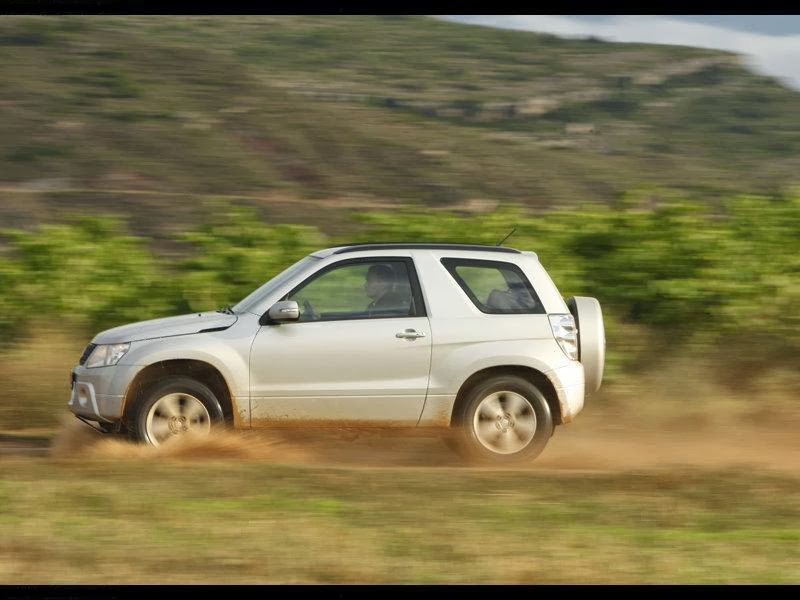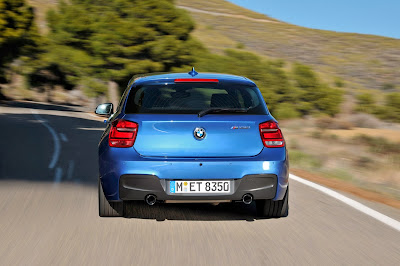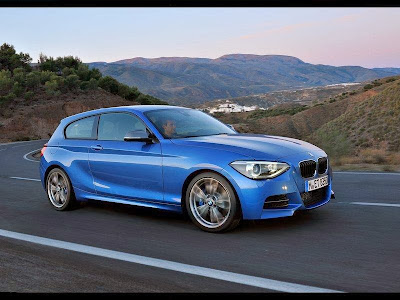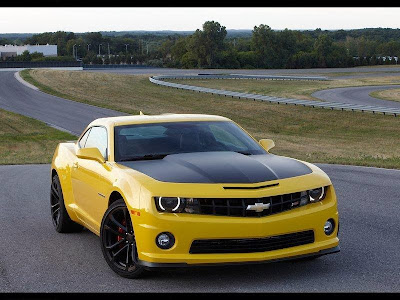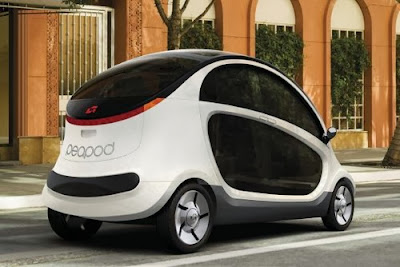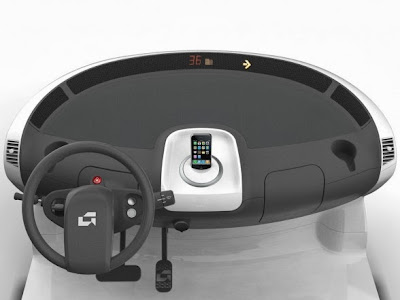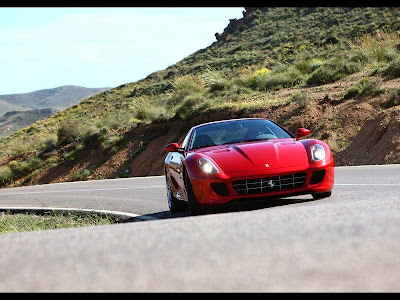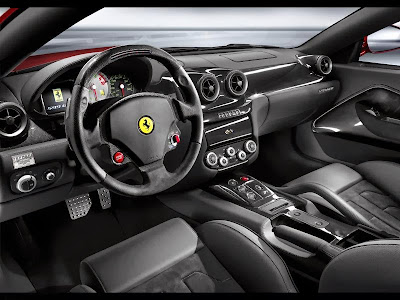Subaru Impreza STI Cosworth CS400 model year 2011
The new Subaru Impreza STI Cosworth CS400 is the result of one of the most eagerly anticipated automotive collaborations in recent times The first genuine Cosworth developed road car since 1996 the latest limited edition Impreza offers performance car fans the thrill of a lifetime combined with exclusivity production will be restricted to 75 cars.
The Cosworth-tuned turbocharged vehicle is one of the world's most accelerative hatchbacks The renowned 2.5 litre turbocharged Boxer engine is transformed to produce 33 per cent more power drawing heavily on Cosworth's extensive Formula 1 experience. The engine which drives all four wheels via a six-speed manual gearbox boasts an impressive 400 ps and the new model reaches 62 mph in just 3.7 seconds, going on to cover a quarter mile in 12.75 seconds at a terminal speed of 107 mph Top speed is limited to 155mph
The Subaru Impreza STI Cosworth CS400 features an extensive range of Cosworth engineered components in the engine turbo system exhaust suspension brakes and wheels plus subtle improvements to the exterior and interior styling to create a truly distinctive high performance car with everyday hatchback practicality
Marketed exclusively in the UK in right-hand drive form, the Subaru Impreza STI Cosworth CS400 is available in a choice of three exterior colours Spark Silver Dark Grey and San Remo Red and is priced from £49,995 on the road
Engine delivers a 33 per cent power hike
At the heart of the new Subaru Cosworth Impreza is a heavily revised version of the marque's famous horizontally opposed all aluminium Boxer engine The flat four power unit is removed from the car hand finished, and several internal and ancillary components are replaced with up rated items specified by Cosworth
As with all Impreza Boxer engines the STI Cosworth unit features twin overhead camshafts per cylinder bank DOHC plus an Active Valve Control System AVCS to deliver variable valve timing and enhance low speed pulling power
The focus of the Cosworth engine upgrade was to keep the enhancements simple efficient and as close as possible to the original equipment design to guarantee reliability and easy maintenance at regular Subaru dealerships
Internal upgrades include high performance pistons which are manufactured using the same methods as those employed to create Cosworth's Formula 1 pistons Special features reduce carbon build up minimise friction and reduce weight
Forged connecting rods are made from high-strength 4340 EN24 steel and the special Cosworth engine bearings boast a unique combination of design metallurgy and engineering Heavy duty cylinder head studs high-performance multi layered head gaskets and a higher pressure oil pump are also fitted
The overall result is a huge increase in torque higher up the rev range and significantly improved in gear acceleration This not only makes the Impreza more tractable for day-to-day road use but also a far sharper tool on the race track
New turbocharger and breathe easy exhaust systems
An all-new Cosworth turbocharging system features a new compressor design and wastegate actuator to supply up-rated boost pressure and deliver increased power
A unique exhaust system was developed to allow the engine to breathe more easily and unleash its full potential Larger capacity tubular manifolds and increased diameter downpipes speed up the evacuation of hot gases The first catalyst is a non restrictive design and larger tail pipes give the exhaust note a unique tone
After the in-depth Cosworth performance upgrade which includes an ECU re-map the boxer engine in the CS400 generates 33 per cent more power 400 ps at 5,750 rpm, compared with 300 ps at 6,000 rpm for the standard Subaru Impreza WRX STI and 542 Nm of torque while remaining within the torque capacity design limits of the original Impreza drivetrain
Manual transmission and All Wheel Drive system
To handle the increased power of the Cosworth-tuned engine the Subaru Impreza STI's six speed manual transmission has carbon synchromesh applied to the top three ratios and a short throw linkage for quicker shifting
There is also an upgraded single-plate clutch with a revised pressure plate bearing and disc The gearbox and final drive ratios are unchanged.
The Subaru Cosworth Impreza's full time All-Wheel Drive transmission with front and rear limited slip differentials features a 50/50 front to rear torque split as the default however the torque split is varied electronically according to changing conditions The multi mode Driver Control centre differential with viscous coupling senses which axle has the better grip and varies the split ratio in milliseconds to distribute torque accordingly thus maximising traction and minimising the possibility of wheelspin
Fine tuned suspension
Improving the Subaru Cosworth Impreza's handling, steering feel and driver feedback without compromising ride comfort was a primary target for the development team
Retaining Subaru's original suspension layout and major components Cosworth and a team of chassis engineers collaborated with Bilstein and Eibach technicians to tailor a ride handling steering package that was ideally matched to the new model's increased performance
Special Eibach coil springs and new Bilstein inserts featuring unique damping characteristics were manufactured to Cosworth's specifications The ride height was lowered by 10 mm at the front
The benefits of this fettling are twofold. Firstly there is a big improvement in ride quality generally making the Impreza easier to live with on a day to day basis Secondly its on the limit behaviour is more focused and composed The damping upgrades mean that there is less pitch and roll when turning into corners meaning that keen drivers can get back on the power earlier and make the most of the car's Symmetrical All-Wheel-Drive system
Upgraded racing brakes enhance stopping power
To match the new Subaru Impreza Cosworth's supercar pace Cosworth commissioned AP Racing to develop more powerful front brakes Larger diameter (355 mm ventilated front discs were adopted with motorsport-style six pot callipers featuring bespoke pistons operating on larger brake pads
The difference in performance is immediately noticeable The harder pads help to minimise fade meaning that drivers can count on the AP stoppers for effective retardation time and time again
The standard Subaru Impreza WRX STI's rear brake discs overall brake balance and original ABS system have been retained
Stand out looks plus new style wheels
The outstanding performance of the Subaru Impreza Cosworth is reflected in its stand out appearance and standard Xenon headlamps The lowered ride height and wider track give the car a whole new stance which is reinforced by a new shape front bumper new fog lights, upper and lower mesh grilles and a new rear spoiler
Discreet Cosworth badging is carried on the lower grille front seats brake callipers and floor mats Individually numbered plaques are fitted on the engine and door sills Each Subaru Impreza STI Cosworth CS400 is supplied with a numbered certificate of authenticity
Although the new model's alloy wheels are a similar overall size to those of the regular Impreza WRX STI model 18 x 8.5 inch they are lighter and stronger Called Pro Race and finished in anthracite the latest wheels from the Team Dynamics range were selected as compatible with the Subaru's five-stud design. These wheels have a 43 mm offset the standard STI wheel's offset is 55 mm and extend the track by 12 mm improving handling and filling the car's wheel arches more effectively for a more aggressive stance
The new wheels are fitted with high performance low profile Michelin SP3 tyres chosen for their dry and wet-road grip durability, and low noise levels Tyre size is 245/40 R18 and the tread pattern is directional
Interior modifications and generous premium equipment
Inside the sporty new Recaro front seats the rear seats and steering wheel are all re trimmed in Cosworth-branded black leather Also distinguishing the CS400 are Piano Black centre stack and trim accents and the fitment of privacy glass
Standard features carried over from the WRX STI model include LED light emitting diode tail lamps front and rear electric windows, 10-speaker, six-disc radio/CD player satellite navigation Smart entry and push button start plus front side and curtain airbags
Full ownership benefits
The new Subaru Impreza STI Cosworth CS400 comes with the reassurance of a three year or 36,000 mile warranty, plus 12 year anti corrosion cover and three year paintwork warranty
This is in addition to three years membership of Subaru Assistance a comprehensive home and roadside repair and recovery package throughout the UK and Europe administered by Mondial Assistance
TECHNICAL SPECIFICATIONS
Body and Chassis
Five door five seat hatchback, with all steel unitary construction body shell Longitudinally mounted petrol boxer engines driving the front and rear wheels AWD via a six speed manual transmission
Engine
STI 2.5-litre / 400 PS
Name Subaru Boxer
Type DOHC horizontally opposed 'flat four'
Capacity 2.5 litres, 2457 cc
Bore & Stroke 99.5 x 79.0 mm
Compression ratio 8.2:1
Max power 400 PS 295 kW @ 5,750 rpm
Max torque 542 Nm 400 lb.ft @ 3,950 rpm
Valves 16 4-per-cylinder with Dual AVCS
Fuel system Multi-point injection
Construction: Aluminium cylinder block and heads
Emissions class Euro Stage 5
Transmission
Manual Six-speed
Gear Ratios
1: 3.636:1
2: 2.235:1
3: 1.590:1
4: 1.137:1
5: 0.891:1
6: 0.707:1
Reverse: 3.545:1
Final Drive (rear): 3.900:1
Drivetrains
Full-time all-wheel drive with centre differential and viscous coupling, plus Vehicle Dynamics Control Rear limited slip differential Front limited slip differential and Si Drive adjustable centre differential
Suspension & Damping
Front Fully independent subframe mounted MacPherson Struts with Eibach coil springs and gas filled Bilstein shock absorbers Anti-roll stabiliser bar
Rear Fully independent subframe-mounted Multi-Link Eibach coil springs and Bilstein gas filled shock absorbers adjustable anti-roll bar
Steering
Type Electric power-assisted rack & pinion
Gearing 2.5 turns lock-to lock
Turning circle 11.0 m
Brakes
Front 355 x 32 mm ventilated discs with 6 pot callipers
Rear 316 x 20 mm vented discs with single pot callipers
ABS Four-Channel anti-lock system with EBD
Wheels & Tyres
Alloy 18 x 8.5 inch with 245 / 40 R18 directional tyres
Dimensions
Overall length 4,415 mm
Overall width: 1,795 mm excluding door mirrors)
Overall height 1,475 mm
Wheelbase 2,625 mm
Front track 1,530 mm
Rear track 1,540 mm
Ground clearance 140 mm
Capacities all models
Fuel tank 60 litres
Luggage VDA
301 litres rear seats up
1,216 litres rear seats down
Weights
Curb weight min 1,505 kg
Gross weight 1,980 kg
Performance
Top speed 155 mph / 250 km/h electronically limited
0-62 mph / 0-100 km/h: 3.7 s
Subaru Impreza STI Cosworth CS400 model year 2011
Subaru Impreza STI Cosworth CS400 model year 2011
Subaru Impreza STI Cosworth CS400 model year 2011 Photo from the inside

















